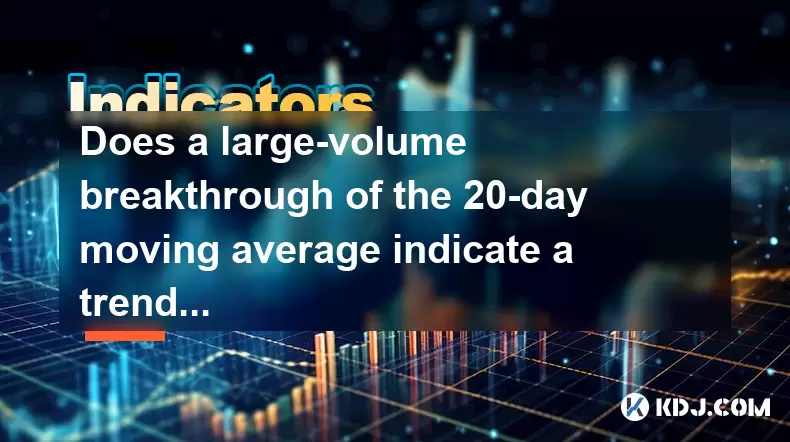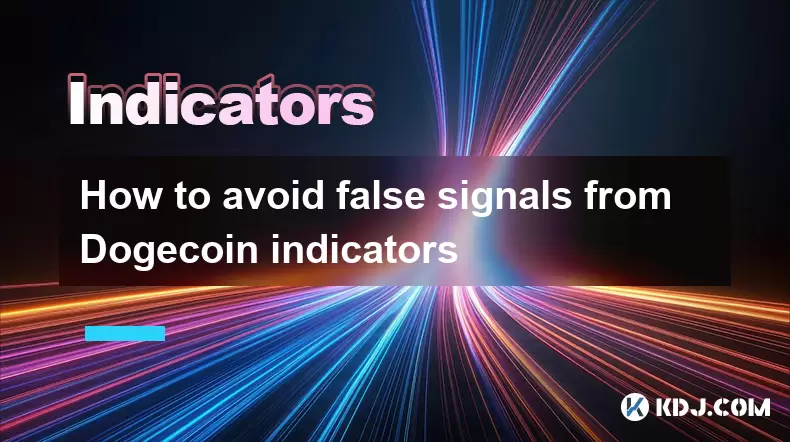-
 Bitcoin
Bitcoin $108,250.0992
0.11% -
 Ethereum
Ethereum $2,515.9404
0.03% -
 Tether USDt
Tether USDt $1.0003
0.00% -
 XRP
XRP $2.2166
-0.19% -
 BNB
BNB $656.5904
0.29% -
 Solana
Solana $147.4122
-0.58% -
 USDC
USDC $1.0000
-0.01% -
 TRON
TRON $0.2830
0.06% -
 Dogecoin
Dogecoin $0.1641
0.27% -
 Cardano
Cardano $0.5739
-0.19% -
 Hyperliquid
Hyperliquid $39.1463
-0.11% -
 Sui
Sui $2.8882
-0.02% -
 Bitcoin Cash
Bitcoin Cash $487.6428
0.31% -
 Chainlink
Chainlink $13.2097
0.07% -
 UNUS SED LEO
UNUS SED LEO $9.0308
0.10% -
 Avalanche
Avalanche $17.8608
0.13% -
 Stellar
Stellar $0.2379
-0.06% -
 Toncoin
Toncoin $2.7400
-0.39% -
 Shiba Inu
Shiba Inu $0.0...01144
-0.36% -
 Litecoin
Litecoin $87.5467
0.66% -
 Hedera
Hedera $0.1538
0.22% -
 Monero
Monero $315.5479
0.36% -
 Dai
Dai $1.0000
0.00% -
 Polkadot
Polkadot $3.3523
-0.71% -
 Ethena USDe
Ethena USDe $1.0003
0.01% -
 Bitget Token
Bitget Token $4.3960
-1.03% -
 Uniswap
Uniswap $7.2663
4.19% -
 Aave
Aave $272.8619
2.04% -
 Pepe
Pepe $0.0...09676
-0.18% -
 Pi
Pi $0.4586
-2.87%
Does a large-volume breakthrough of the 20-day moving average indicate a trend reversal?
A 20-day moving average breakout with high volume often signals a potential trend reversal in cryptocurrencies like Bitcoin or Ethereum, but confirmation through price action and other indicators is essential.
Jul 06, 2025 at 06:56 am

Understanding the 20-Day Moving Average in Cryptocurrency Trading
The 20-day moving average (MA) is a commonly used technical indicator in cryptocurrency trading. It calculates the average price of an asset over the past 20 days and smooths out price fluctuations to help traders identify trends. Traders often use this tool to determine whether a cryptocurrency is in an uptrend, downtrend, or consolidation phase. The moving average acts as a dynamic support or resistance level, especially during volatile market conditions.
In the context of Bitcoin, Ethereum, or altcoins, the 20-day MA can serve as a short-term trend filter. When prices trade above it, the bias tends to be bullish; when below, bearish. However, simply observing price movement around the MA isn't enough to confirm a trend change. Volume plays a critical role in validating any breakout or breakdown from this key level.
The Significance of Volume in Technical Analysis
Volume is a crucial factor that many traders consider when interpreting chart patterns or technical indicators. In crypto markets, where volatility is high and manipulation can occur, volume provides confirmation of whether a price move has conviction behind it. A large-volume breakout typically indicates strong buying pressure, while a large-volume breakdown suggests aggressive selling.
When a cryptocurrency breaks above or below the 20-day moving average on high volume, it may signal a shift in momentum. This is because increased participation from buyers or sellers could indicate a new phase in the market cycle. For example, if Bitcoin closes significantly above its 20-day MA with volume doubling compared to the previous week, it might suggest institutional or retail interest is returning.
However, it's important to distinguish between a genuine breakout and a false one. Sometimes, price may spike through the MA briefly but fail to sustain the move, which can lead to whipsaws for traders who act too quickly.
How to Identify a Valid Breakout From the 20-Day MA
To determine whether a breakout from the 20-day MA is valid, traders should follow these steps:
- Confirm the close: Ensure that the candlestick closes above or below the 20-day MA line. An intraday move that doesn’t close beyond the MA may not carry much weight.
- Assess the volume: Check whether the volume accompanying the breakout is significantly higher than the average volume over the past 10–15 days. A spike in volume adds credibility to the breakout.
- Observe follow-through: Wait for at least one or two additional candles to confirm the direction. If the price continues to move in the breakout direction, it increases the probability of a trend reversal.
- Look for confluence: Consider other technical indicators such as RSI, MACD, or Fibonacci retracement levels. A breakout supported by multiple signals is more reliable.
- Use timeframes wisely: Higher timeframes like the 4-hour or daily charts provide stronger signals than lower ones like 15-minute or 1-hour charts.
These steps help traders avoid premature entries and improve the accuracy of their decisions based on the 20-day MA breakout strategy.
Historical Examples of 20-Day MA Breakouts in Crypto Markets
Looking back at historical data, there have been several instances where a high-volume breakout above the 20-day MA preceded a significant trend reversal in major cryptocurrencies.
For instance, in late 2022, Ethereum broke above its 20-day MA with a surge in volume after weeks of bearish action, signaling the start of a corrective rally. Similarly, in early 2023, Solana experienced a sharp upward move accompanied by elevated volume, pushing the price decisively above its 20-day MA and leading to a multi-week uptrend.
Conversely, during the March 2020 crash, Bitcoin broke below its 20-day MA on extremely high volume, marking the beginning of a steep decline. These examples illustrate how volume-enhanced breakouts can serve as meaningful signals, though they are not foolproof.
It’s also worth noting that not every large-volume breakout leads to a full-blown trend reversal. Some result in temporary bounces or corrections within a larger trend. Therefore, traders should always assess the broader market environment before making assumptions.
Common Misinterpretations and Pitfalls to Avoid
One common mistake traders make is assuming that any breakout above the 20-day MA with high volume automatically signals a reversal. In reality, several factors can distort this interpretation:
- Market noise: Short-term spikes due to news events or whale movements can create misleading signals.
- Lack of follow-through: Even with high volume, if the price fails to continue in the breakout direction, the move may lack sustainability.
- False breakouts: These occur when price moves beyond the MA but quickly reverses, trapping traders who entered positions prematurely.
- Ignoring broader context: Focusing solely on the 20-day MA without considering longer-term indicators like the 50-day or 200-day MA can lead to poor decision-making.
Traders should also be cautious about applying this rule uniformly across all cryptocurrencies. Some assets may exhibit different behaviors due to liquidity differences, market cap, or project-specific developments.
Frequently Asked Questions
Q: Can the 20-day MA be used effectively in sideways markets?
Yes, the 20-day MA can still be useful in range-bound environments. It often acts as a magnet, drawing price toward it before reversing. Traders may use it to identify potential support or resistance zones for countertrend trades.
Q: Is volume alone sufficient to confirm a breakout?
No, volume should never be used in isolation. While it adds confidence to a breakout, it must be combined with price action, candlestick patterns, and other technical tools to increase the probability of success.
Q: Should I adjust the 20-day MA for different cryptocurrencies?
Some traders tweak the period based on the asset’s volatility. However, sticking to the standard 20-day MA ensures consistency across different assets and reduces curve-fitting risks.
Q: How do I calculate the 20-day MA on a crypto exchange platform?
Most platforms like Binance, Coinbase, or TradingView offer built-in tools. Navigate to the chart settings, select "Indicators," and add the Moving Average with a period of 20. You can customize the color and style for better visibility.
Disclaimer:info@kdj.com
The information provided is not trading advice. kdj.com does not assume any responsibility for any investments made based on the information provided in this article. Cryptocurrencies are highly volatile and it is highly recommended that you invest with caution after thorough research!
If you believe that the content used on this website infringes your copyright, please contact us immediately (info@kdj.com) and we will delete it promptly.
- Litecoin Breakout Watch: What Traders Need to Know Now
- 2025-07-06 16:50:13
- Bitcoin, Solana, Ethereum: Decoding the Latest Buzz on the Blockchain
- 2025-07-06 16:50:13
- Widnes Resident's 50p Could Be Your Ticket to Easy Street: Rare Coin Mania!
- 2025-07-06 16:55:13
- Bitcoin, Solaris Presale, and Token Rewards: What's the Buzz?
- 2025-07-06 16:55:13
- Grass Seeds, Garden Experts, and a £1 Coin Hack: Your Guide to a Perfect Lawn
- 2025-07-06 14:30:13
- Cracking the Code to a Perfect Lawn: Grass Seeds, Expert Tips, and the £1 Coin Hack!
- 2025-07-06 14:50:13
Related knowledge

How to spot manipulation on the Dogecoin chart
Jul 06,2025 at 12:35pm
Understanding the Basics of Chart ManipulationChart manipulation in the cryptocurrency space, particularly with Dogecoin, refers to artificial price movements caused by coordinated trading activities rather than genuine market demand. These manipulations are often executed by large holders (commonly known as whales) or organized groups aiming to mislead...

What is the significance of a Dogecoin engulfing candle pattern
Jul 06,2025 at 06:36am
Understanding the Engulfing Candle Pattern in CryptocurrencyThe engulfing candle pattern is a significant technical analysis tool used by traders to identify potential trend reversals in financial markets, including cryptocurrencies like Dogecoin. This pattern typically consists of two candles: the first one is relatively small and indicates the current...

Dogecoin monthly chart analysis for long term investors
Jul 06,2025 at 10:08am
Understanding the Dogecoin Monthly ChartFor long-term investors, analyzing the monthly chart of Dogecoin (DOGE) provides a macro view of its price behavior over extended periods. The monthly chart captures major trends, key resistance and support levels, and potential reversal zones that are crucial for strategic investment planning. Unlike daily or hou...

How to manage risk using ATR on Dogecoin
Jul 06,2025 at 02:35am
Understanding ATR in Cryptocurrency TradingThe Average True Range (ATR) is a technical indicator used to measure market volatility. Originally developed for commodities, it has found widespread use in cryptocurrency trading due to the high volatility inherent in digital assets like Dogecoin (DOGE). The ATR calculates the average range of price movement ...

Setting up a Dogecoin trading strategy in Pinescript
Jul 06,2025 at 05:00pm
Understanding Dogecoin and Its Place in the Cryptocurrency MarketDogecoin (DOGE) is a decentralized, peer-to-peer cryptocurrency that was initially created as a joke but has since gained significant traction in the crypto market. Despite its humorous origins, Dogecoin has been adopted by a large community and supported by notable figures such as Elon Mu...

How to avoid false signals from Dogecoin indicators
Jul 06,2025 at 06:49am
Understanding Dogecoin Indicators and Their LimitationsDogecoin indicators are tools used by traders to analyze price movements and make informed decisions. These include moving averages, Relative Strength Index (RSI), MACD, and volume-based metrics. However, these tools can sometimes generate false signals, especially in highly volatile markets like Do...

How to spot manipulation on the Dogecoin chart
Jul 06,2025 at 12:35pm
Understanding the Basics of Chart ManipulationChart manipulation in the cryptocurrency space, particularly with Dogecoin, refers to artificial price movements caused by coordinated trading activities rather than genuine market demand. These manipulations are often executed by large holders (commonly known as whales) or organized groups aiming to mislead...

What is the significance of a Dogecoin engulfing candle pattern
Jul 06,2025 at 06:36am
Understanding the Engulfing Candle Pattern in CryptocurrencyThe engulfing candle pattern is a significant technical analysis tool used by traders to identify potential trend reversals in financial markets, including cryptocurrencies like Dogecoin. This pattern typically consists of two candles: the first one is relatively small and indicates the current...

Dogecoin monthly chart analysis for long term investors
Jul 06,2025 at 10:08am
Understanding the Dogecoin Monthly ChartFor long-term investors, analyzing the monthly chart of Dogecoin (DOGE) provides a macro view of its price behavior over extended periods. The monthly chart captures major trends, key resistance and support levels, and potential reversal zones that are crucial for strategic investment planning. Unlike daily or hou...

How to manage risk using ATR on Dogecoin
Jul 06,2025 at 02:35am
Understanding ATR in Cryptocurrency TradingThe Average True Range (ATR) is a technical indicator used to measure market volatility. Originally developed for commodities, it has found widespread use in cryptocurrency trading due to the high volatility inherent in digital assets like Dogecoin (DOGE). The ATR calculates the average range of price movement ...

Setting up a Dogecoin trading strategy in Pinescript
Jul 06,2025 at 05:00pm
Understanding Dogecoin and Its Place in the Cryptocurrency MarketDogecoin (DOGE) is a decentralized, peer-to-peer cryptocurrency that was initially created as a joke but has since gained significant traction in the crypto market. Despite its humorous origins, Dogecoin has been adopted by a large community and supported by notable figures such as Elon Mu...

How to avoid false signals from Dogecoin indicators
Jul 06,2025 at 06:49am
Understanding Dogecoin Indicators and Their LimitationsDogecoin indicators are tools used by traders to analyze price movements and make informed decisions. These include moving averages, Relative Strength Index (RSI), MACD, and volume-based metrics. However, these tools can sometimes generate false signals, especially in highly volatile markets like Do...
See all articles

























































































